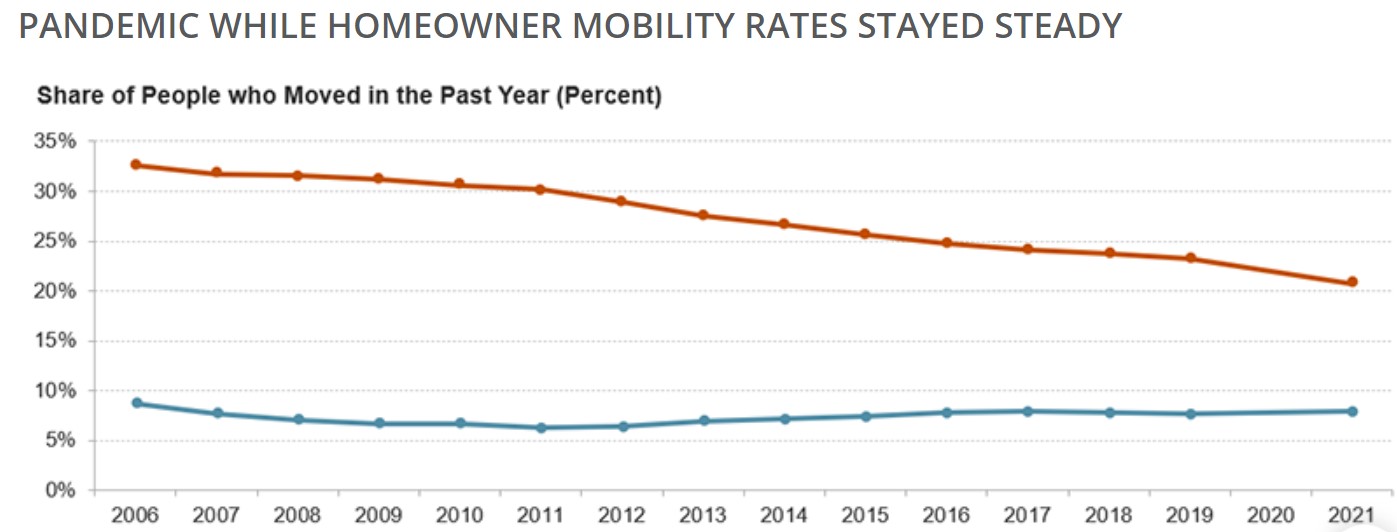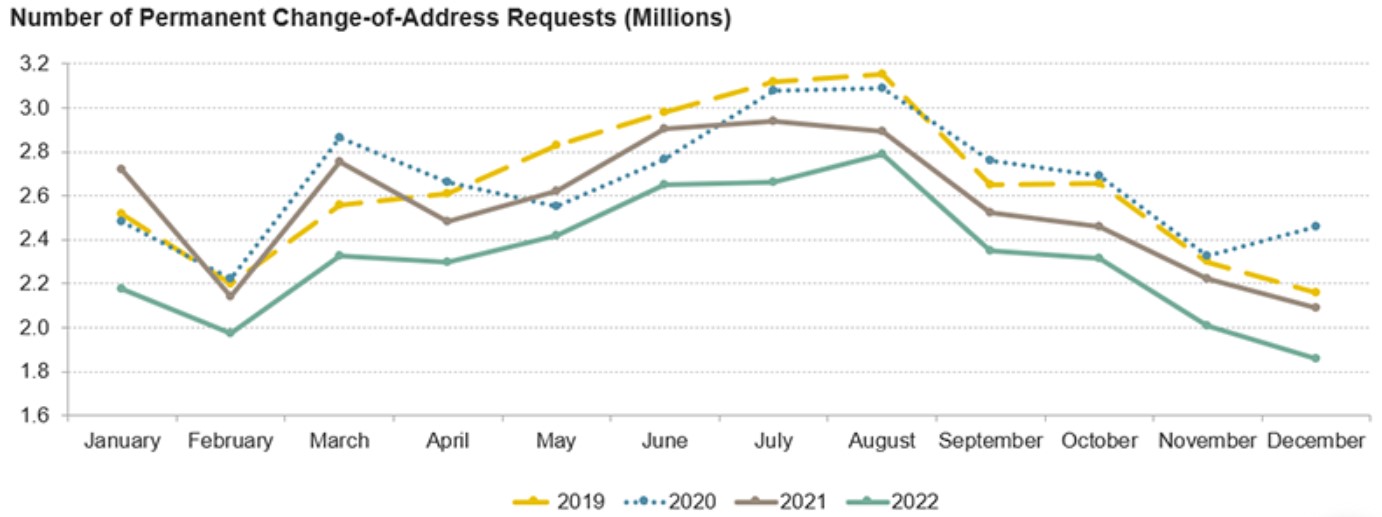 Senior Research Analyst Riordan Frost of the Joint Center for Housing Studies at Harvard University has authored a new blog post on those who chose to move during the early days of the pandemic, and the dwindling number who have moved since asks the question if this was a mass exodus or mass inertia?
Senior Research Analyst Riordan Frost of the Joint Center for Housing Studies at Harvard University has authored a new blog post on those who chose to move during the early days of the pandemic, and the dwindling number who have moved since asks the question if this was a mass exodus or mass inertia?
According to Frost, the share of those who did move during the pandemic fled densely populated urban centers and fled to the suburbs and beyond by way of smaller metros and rural areas.
He continued by saying residential mobility rates have been declining for the better part of the last 40 years. The declines happened across the board but were steepest among young adults and renters, and for local moves. In the new blog post, Frost builds on that work and draws on a variety of data sources to explore how moving has changed during the pandemic.
One finding was that the types of moves and movers that had the steepest mobility rate declines before the pandemic remained the same during the pandemic. From 2019 to 2021, the mobility rate for adults aged 18–24 fell from 24.1% to 23.1%, while mobility rates among renters fell from 23.2% to 20.8%, according to American Community Survey (ACS) data. Local (within-state) moves, which are by far the most common type of move, fell from 10.2% to 9.3%. Interstate migration rates, in contrast, stayed steady at just over 2%.

Overall, mobility rates declined across demographic characteristics including age, race, and ethnicity.
Numbers were better among well-off singles and families; for example, the mobility rate for adults with a four-year college degree held steady from 2019 to 2021, and the rate for people in the highest-income quartile households actually rose slightly.
“Annual data, however, miss the nuance that monthly data are better able to capture. Fortunately, the United States Postal Service (USPS) Change of Address (CoA) data offer insight into monthly trends in mobility throughout the pandemic,” Frost wrote. “These data reveal that moves spiked twice early in the pandemic before reverting to pre-pandemic levels by the end of 2021 and falling further throughout 2022.”
“As a result, USPS data show all types of moves—individual, family, permanent, and temporary—were lower in 2022 than before the pandemic,” Frost continued. “It is worth noting that, while the initial spike in mobility and the second increase in late 2020 and early 2021 coincide with the onset of the pandemic and the first major surge in COVID-19 cases, there were no mobility spikes during later surges like those associated with the Delta and Omicron variants.”

Click through to read the rest of Frost’s thoughts on the topic.







